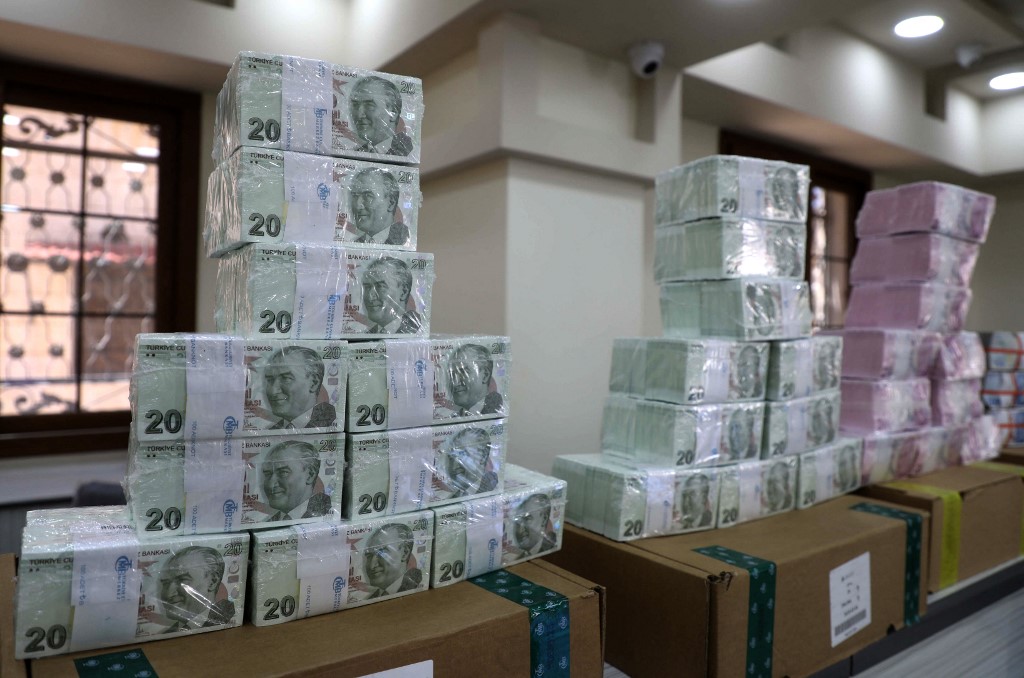The emergency plan unveiled by Turkey’s President Recep Tayyip Erdoğan to curb the lira’s depreciation stipulates that the country’s treasury will make up for losses incurred by holders of lira deposits should the lira’s declines against hard currencies exceed bank interest rates.
The instrument will apply for individuals holding lira deposit accounts with maturities between three and 12 months. The minimum interest rate will be the central bank’s benchmark rate, and no withholding tax will be implemented.
If banks pay 15 percent in interest for one-year lira deposits but the currency depreciates 20 percent against the dollar in the same period, the treasury, that is, taxpayers, would pay deposit-holders the differential.
The measure aims to attract people who hold deposits in foreign currencies to switch to the lira, which would help the Turkish currency curb losses.
More than half of all deposits in the Turkish banking system are in foreign currencies, according to data from Turkey’s banking watchdog.
The measure means that the treasury takes on the foreign-currency risk of 3.3 trillion lira ($252 billion) now deposited in retail banking accounts because if the lira depreciates beyond deposit rates, a burden will be imposed on the budget.
If the central bank prints money to make up the difference, inflation will soar.
The lira rallied some 25 percent from record lows after the announcement by Erdoğan late on Monday, in its biggest rally on record.
While the worst may be over for the lira, “until interest rates provide a credible anchor against inflation, the lira will tend to be volatile and subject to downward pressure,” Bloomberg quoted Todd Schubert, head of fixed-income research at Bank of Singapore Ltd, as saying.
Many economists question whether Erdoğan’s new approach is sustainable.
According to experts, the possible failure of the new instrument would prompt the central bank to print money in a bid to supply the treasury with the money to compensate holders of lira deposits for their losses.
“The deposit guarantee method will increase the public burden,” former Turkish economy minister Ali Babacan told reporters.
“The treasury will pay for it with taxes. This is the dollarization of the country’s economy,” Babacan said.
Turkey’s main opposition Republican People’s Party (CHP) leader Kemal Kılıçdaroğlu said the government provided guarantees with money it does not have.
Speaking in parliament, Kılıçdaroğlu said Erdoğan’s government could not establish confidence in markets, adding that Turkey needed a strategy rather than short-term plans.
Saying that citizens trusting foreign currencies over the lira showed a governance problem, the CHP chairman repeated a call for immediate elections.
The instrument reminded experts of something that was tried by Turkey in the 1970s to attract foreign currency flows, mainly from the Turkish citizens living abroad. “Convertible Turkish lira deposits” (CTLDs), as they were known at the time, guaranteed the principal and interest payments on these deposits against all risk created from depreciation of the currency.
The scheme led to a huge credit explosion by local banks and triggered a new wave of inflation, creating an excruciating burden on the treasury. As a result, the government ended the practice in 1978.



